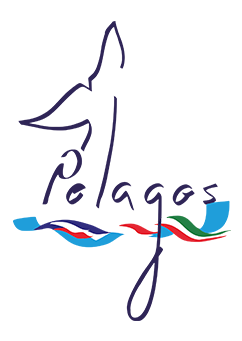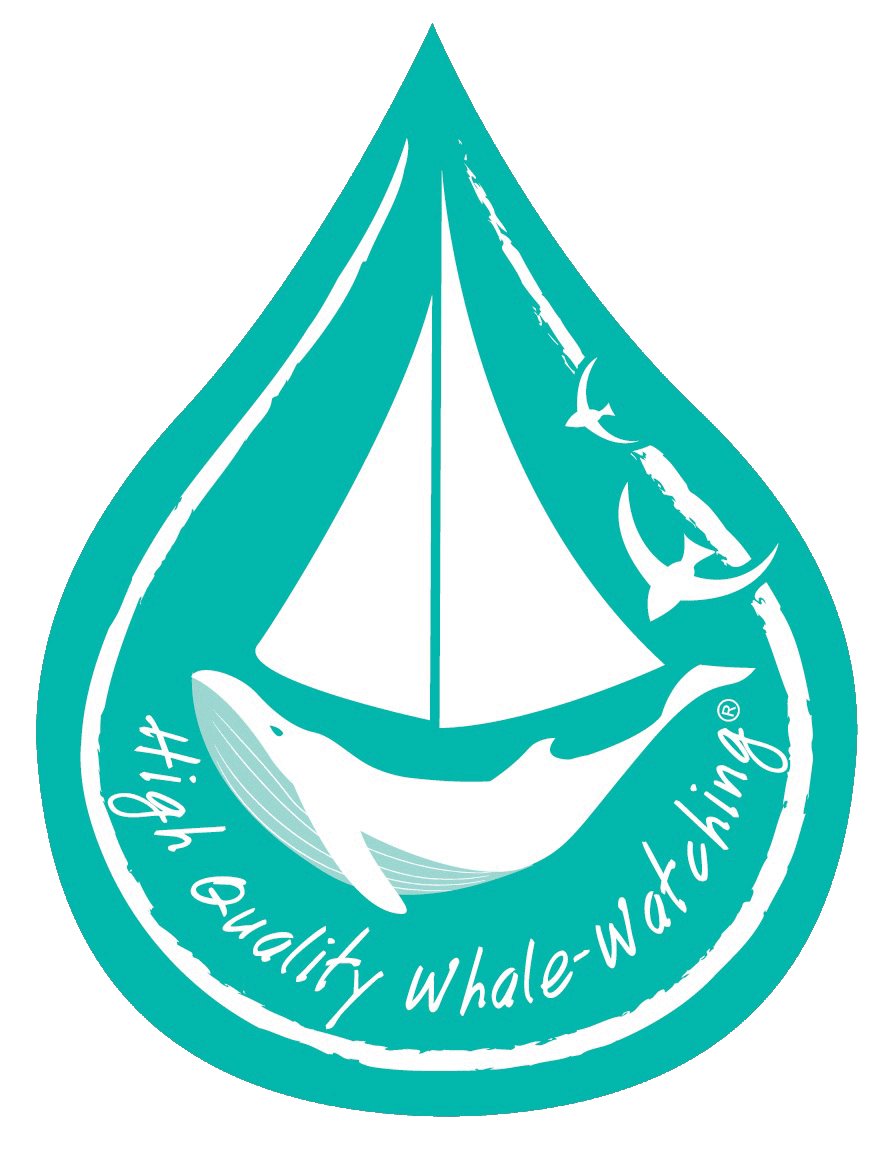The coexistence between marine mammals and humans has a history as old as mankind itself. A history that begins with episodes of hunting, competition for fish resources and some instance of mutual assistance (National Geographic Video & Animal Planet Video) and that, over time and with the development of commercial and industrial activities and the intensification of urbanization, carrying way too high levels of pressure on many marine mammal species has become extremely unbalance. There is a global recognition that this situation is now unbearable (see the UN General Assembly Resolution 74/224) and that we need a transformative change that will allow us to Live in Harmony with Nature.

SHIPPING AND COLLISIONS
Maritime transportation is a major contributor to the world economy, but it may have a significant impact on marine mammals. The impact of shipping on cetaceans is especially noticeable in the Mediterranean Sea, which represents only 0.8% of the global ocean surface and yet it gathers 13% of the world sea trade. This leads to intense interactions with marine mammals, including fatal ones like ship strikes (i.e.: deadly collisions between a ship and a cetacean).
While most cetacean species are at risk because of human activities, marine giants such as sperm and fin whales are mostly threatened by collisions and illegal driftnetting.
The Pelagos Sanctuary and contiguous areas are known to be hot spots for ship collisions with fin whales. The events of collision risk undermining the recovery of this endangered population.
As actions are required to reduce the risk of collisions, France, Italy, Monaco and Sapin in 2023 promoted the designation of a Particularly Sensitive Sea Areas (PSSA) in the north-western Mediterranean Sea by the International Maritime Organization (IMO). This area wholly includes the Pelagos Sanctuary and the Spanish Cetacean Migration Corridor, two Specially Protected Areas of Mediterranean Importance (SPAMI). Currently the north-western Mediterranean PSSA entails only mitigation measures of voluntary nature. However, in the near future mandatory mitigation measures, such as speed reduction or restricted areas, could be implemented to ensure the reduction of risk of collisions with fin and sperm whales particularly in certain seasons. Meanwhile various stakeholders, including the Pelagos Agreement, coast guards, shipping companies and scientists, are focusing on enhancing awareness on this issue and finding innovative mitigation tools. These include improving knowledge on collisions (e.g., models, behavior analysis) or testing technical solutions on collision avoidance strategies (e.g., tools to share whale observations, real-time acoustic detection). The Pelagos Agreement is fully committed to these conservation efforts and assists and supports interested stakeholders and concerned governments.
ANTI-COLLISIONS AND COLLISION REPORTING: CODE OF CONDUCT
If you are navigating within the Pelagos Sanctuary and beyond, please:
- plan continuous observation, to spot whales and other animals from far away;
- when you spot a large cetacean or an aggregation of cetaceans slow down to max 10-13 knots;
- if you must maneuver away from the animal, pay particular attention as there may be individuals emerging;
- if possible, inform by VHF ships coming in the opposite direction;
- promptly transmit the GPS position and time of each collision to the Coast guard.

BYCATCH
Incidental entanglement in fishing nets is one of the major causes of cetacean mortality and other marine protected animals such as sea turtles, rays, etc.
To quantify the impact of fishery-induced mortality on cetaceans, information on total bycatch and species’ abundance is required. This information is often lacking.
The repercussions of fishing on cetaceans have grown in parallel with the global development of this activity, not only because of incidental bycatch, but also because of increased pressure on the fish stocks on which cetaceans feed.
Fishery is an important traditional and cultural activity and a source of livelihood for fishing businesses. Some fishermen have shown genuine goodwill, applying techniques that reduce bycatch, but much still needs to be done to ensure sustainable fishing.

DISTURBANCE AND STRESS
All nautical activities involving either voluntarily or involuntarily approaching a marine mammal and their important habitats (e.g., breeding sites, feeding sites, etc.) are considered potential sources of disturbance and stress. Hence, they need to be correctly regulated.

Whale watching
The fascination aroused by large marine mammals is the basis of the activity of whale watching, which represents an invaluable opportunity for public awareness and education. but it can be a source of stress for the species observed, resulting in escape, disruption of the group and disturbance of the dive-breathe cycle during the resting phase. All this can represent a long-term danger to cetaceans, especially in the case of small or geographically isolated populations. Hence, it is imperative that this activity is well regulated, or at least controlled, not only for cetaceans themselves, but also for the ‘whale watchers’ who are unaware of the danger posed by being in close proximity to wild animals.
To address poorly managed observation practices, the Pelagos Agreement launched a Code of Good Conduct for whale watching operators and recreational boaters. A follow up of this initiative, ACCOBAMS and the Pelagos Sanctuary established an eco-label called ‘High-Quality Whale Watching’. This label constitutes an international management tool that:
- allows the public to identify operators who follow an approach of ecological responsibility;
- contributes to the promotion of reasoned whale-watching activity, thus limiting its impacts on cetaceans and promoting its strengths (environmental awareness, education);
- helps collect data on marine mammals and their behavior and health status.

MARITIME TRAFFIC
The Pelagos Agreement is investing in projects that will help obtain updated information on distribution of cetacean species and of various anthropic pressures in this region, including maritime traffic. Studies will model spatial and temporal characteristics of marine traffic and related underwater noise. By comparing maps of the pressures with those of the preferred habitats of the animals, it will be possible to highlight hot spots of potential impacts of maritime traffic on species and consequently to identify appropriate solutions to better manage this pressure within the Sanctuary.

SPORTING COMPETITIONS
Fast motorized vessels can disturb marine mammals, especially if these gather in areas where they are concentrated. Offshore races take place in the open sea in fast boats that can reach speeds of 250km/h. The risks to marine mammals are various: disruption of their regular behavior, inability to communicate because of underwater noise, collisions/deaths, etc.
Article 9 of the Pelagos Agreement stipulates that ‘the Parties shall consult each other to regulate and possibly prohibit competitions of fast motorboats in the Sanctuary’. Because of this, these competitions were banned within the Sanctuary in Italian waters (Italian Law 391/2001, art. 5). In the Principality of Monaco such competition requires a special authorization; however, it has been decades that these are not allowed. In recent years, France has rejected numerous requests to organize speedboat races. France, Italy and Monaco cooperate on this issue and act together towards harmonization.

Recreational boating activities
Recreational boaters need to be educated on the potential impact that certain behaviors may have on marine mammals. Those who drive a boat must abide by the Pelagos/ACCOBAMS Code of good conduct, which explains how to best approach animals (i.e.: distances to be maintained, speed, and allowed maneuvers) and what should never be done (e.g.: approach groups with calves).
Sea users often prove to be sensible and environmentally aware people. For this reason, the Pelagos Agreement developed a special ‘Agreement tool’, which includes the active involvement of boaters as ‘Ambassadors’ of the Sanctuary’.

POLLUTION
Sea and land-generated pollution (biological, chemical, litter)
The Mediterranean basin hosts a high density of inhabitants, fishing and commercial shipping activities, oil and gas extraction, and tourism. These activities, combined with an increase in the coastal industrial economy, have a great impact on the ecosystems. Cities’ sewage, industrial and incidental discharges, massive seasonal presence of bathers, are all important sources of persistent organic pollutants, emerging contaminants, marine litter and pathogens.
As apex predators with long life spans, cetaceans are very sensitive to environmental contaminants, particularly to legacy contaminants as heavy metals, legacy organic pollutants as polychlorinated biphenyls (PCBs), polybrominated diphenyl ethers (PBDEs), dichlorodiphenyltrichloroethane (DDTs), and emerging pollutants such as plastic additives and pharmaceuticals and personal care products (PPCPs). Persistent organic contaminants are chemical compounds of global concern due to their persistence in the environment, their ability to be transported over long distances and their effects on natural populations. They are biologically active chemicals that can bioaccumulate and biomagnify within marine food webs and have the potential to negatively affect marine organisms. Studies on cetaceans in the Mediterranean Sea and particularly in the Pelagos Sanctuary, have shown that these species have among the highest concentration of chemical pollutants in their tissues.
Exposure to environmental compounds can cause immune system suppression and endocrine disruption which can affect population health. Increased infectious disease susceptibility, and neoplasia have also been linked to high levels of contaminants in marine mammals.
Marine litter is defined as any persistent, manufactured or processed solid material discarded, disposed, or abandoned in the marine environment. It is globally acknowledged as a major societal challenge of our times, due to its significant environmental, economic, social, political and cultural implications.
The pollution of the oceans due to plastic waste generates great concern for both the scientific community and society. These materials accumulate in both shallow and deep waters, and especially in closed basins such as the Mediterranean Sea. Between 4.8 and 12.7 million tons of plastic waste were dumped into the ocean in 2010. Nowadays, marine litter is commonly observed across all oceans and marine ecosystems.
As highlighted by several ocean circulation models the Mediterranean Sea has been considered a sensitive plastic litter accumulation zone with an average concentration comparable to the great oceanic gyres. Marine megafauna, such as cetaceans and marine turtles, are particularly prone to ingestion and entanglement in marine litter. Entanglement can result in injury, drowning or strangulation of the organisms. Ingestion can cause pathology ranging from no discernible impact through to blockage of the digestive tract, suffocation and starvation. An increase in the number of cases of interaction of cetaceans with marine litter has been reported over the last five decades.

UNDERWATER NOISE
Among the sources of impact to the marine environment one of the most discussed and still poorly known types of pollution is the anthropic underwater noise. Increased background noise affects underwater life similarly as it does with terrestrial animals, including human beings.
In the last century, anthropic underwater noise, either from impulsive (i.e., pile driving) or continuous (i.e., maritime traffic) sources, has increased the underwater ambient noise level, representing one of the most widespread threats to the world oceans.
The tendency of a continuous growth in shipping activity in the Mediterranean, together with coastal development, offshore construction and operations, seismic surveys and military exercises, is leading to a consequent increase in the Mediterranean acoustic pollution.
Marine mammals rely on sound for their survival, as they use vocal emission and echolocation to sense the environment, communicate, breed, locate prey and detect possible threats. At lower frequencies, sound can propagate over great distances, sometimes hundreds or even thousands of kilometers, and it is therefore a fundamental tool for the development and preservation of social relationships between animals. Therefore, noise introduced by human activities may have a variety of negative effects on marine mammals, ranging from the reduction of the ability to detect sounds, temporary or permanent hearing loss, behavioral and physiological changes, injury, and even death. The severity of noise-induced disturbance is roughly correlated to the received acoustic power.
The need for a regulatory system to mitigate such effects has increased over the past few years. The Marine Strategy Framework Directive (2008/56/CE), the first international legal instrument to explicitly include man-made underwater noise within the definition of pollution, highlights the need to identify anthropic noise levels that do not adversely affect marine environment for both “loud low and mid frequency impulsive sounds” and “continuous low frequency sounds”.
Since then, a variety of actions have been taken. At the end of 2022, EU experts have published new recommendations for the monitoring of noise in European waters, providing thresholds on maximum acceptable levels for continuous (such as from shipping) and impulsive (for example from oil and gas production) underwater noise. Guidelines for the reduction of underwater noise from commercial shipping to address adverse impacts on marine life, have been agreed by the IMO Sub-Committee on Ship Design and Construction. In addition, scientific data show that a 10 dB reduction from shipping can result in a 90% decrease of the instantaneous acoustic footprint.
Research programs are conducted in the Pelagos Sanctuary to evaluate the risk of exposure to noise sources such as maritime traffic. The Sanctuary represents the optimal site to test the effectiveness of actions proposed, evaluate baseline noise data and thresholds for noise levels that can be tolerated by local species, minimizing the negative effect that noise can have on marine mammals.
DONATE TO THE PELAGOS AGREEMENT
Voluntary contributions to the “Pelagos Voluntary Fund” provide financial support for the implementation of activities within the Action Plan (2022-2027) and related Work Programmes of the Agreement.
If you wish to contribute to the activities of the Pelagos Sanctuary, you can choose the amount you prefer and the subject matter you want to support!
Photos credits :
© CIMA
© Kindel Media
© Rui Stenio
© Rauba Capeu
© Volpi Giuseppina – Concours photo RAMOGE – L’Homme et la Mer


